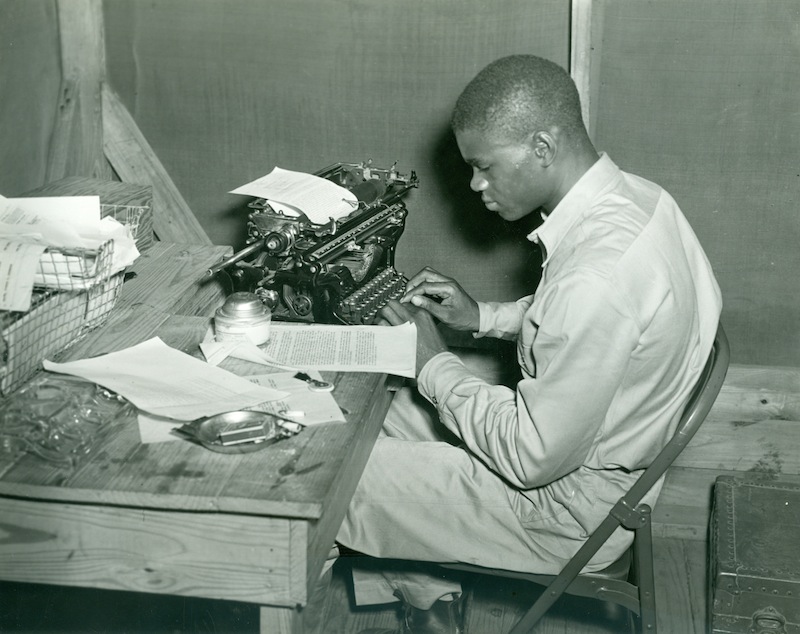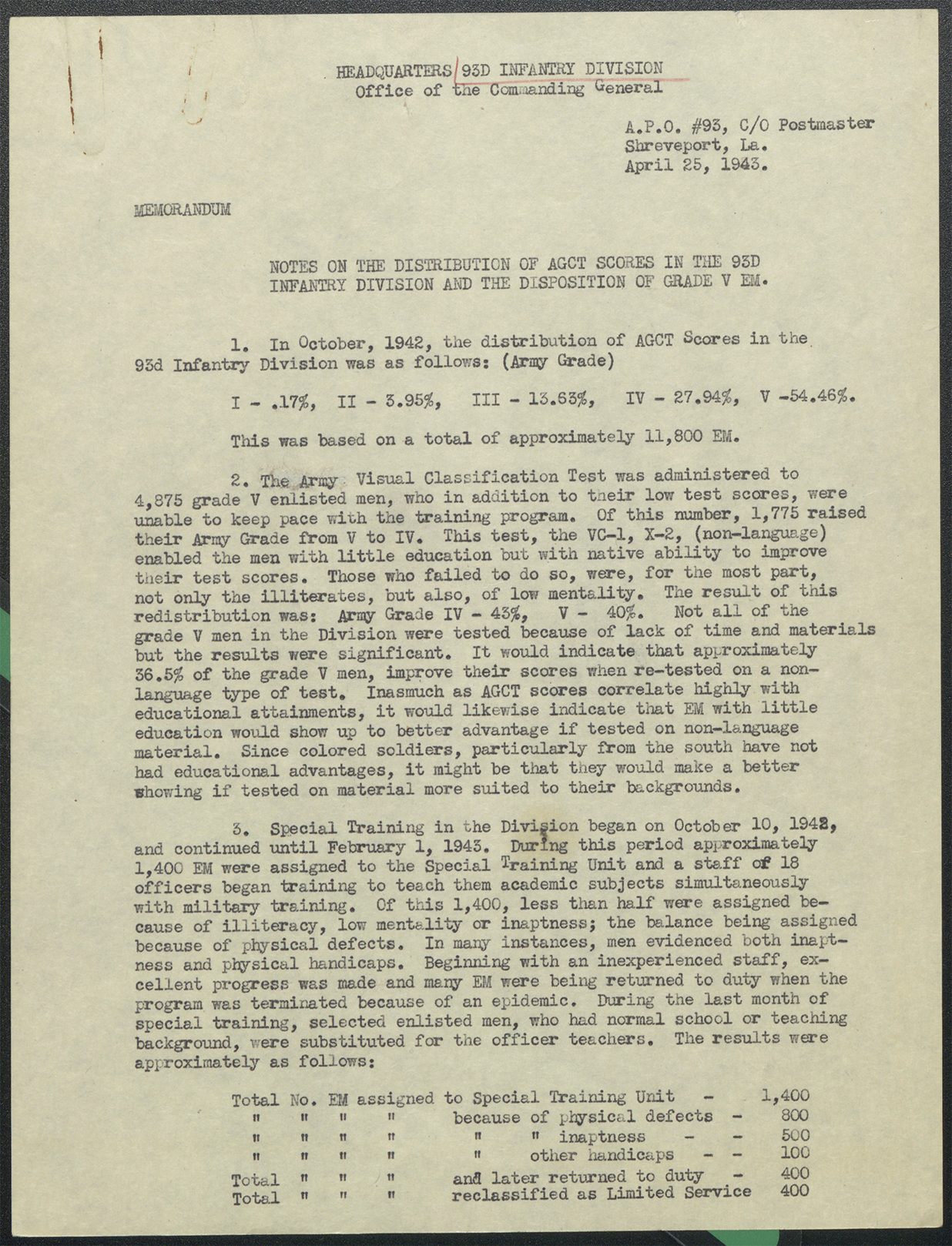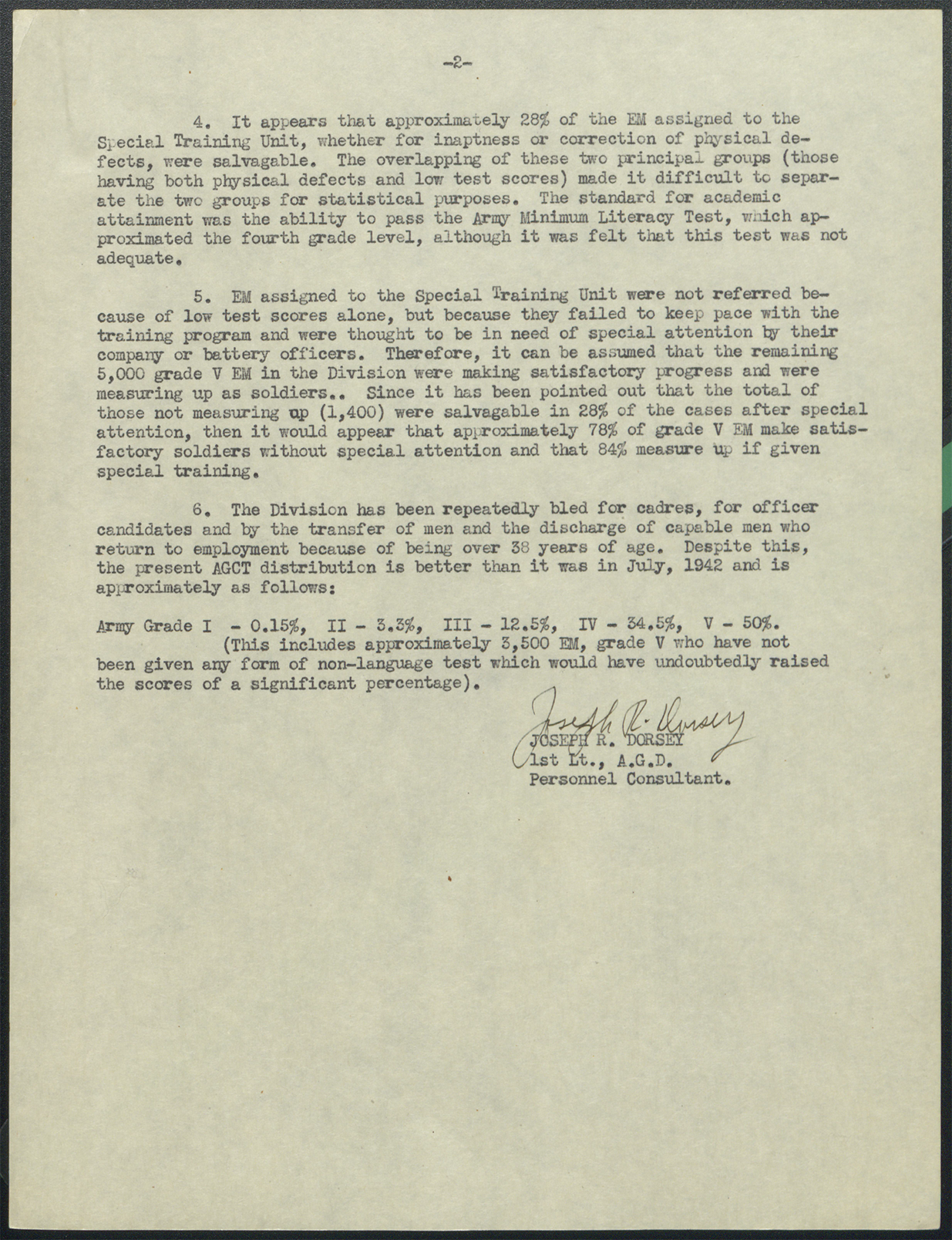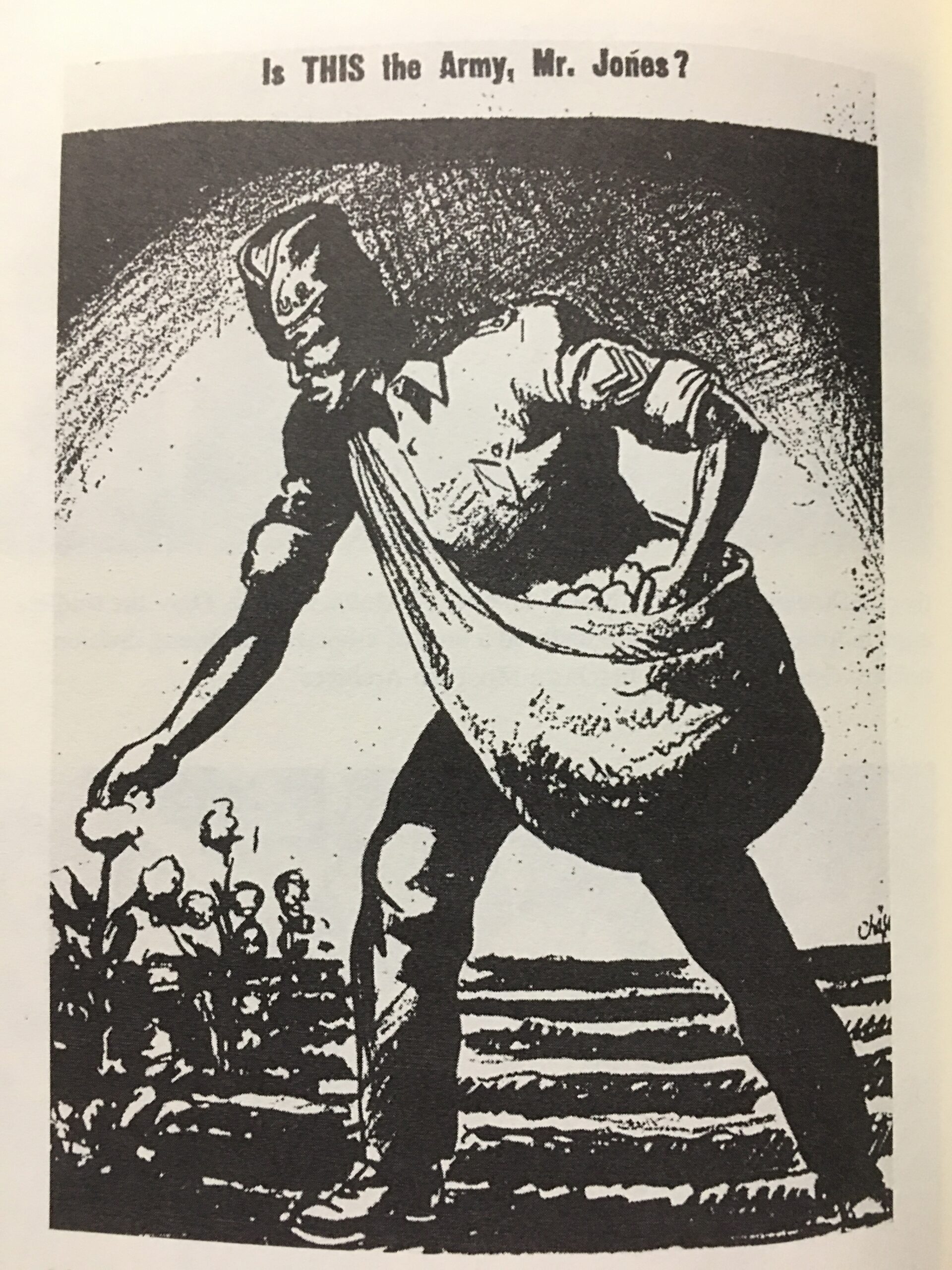Transcript of a Letter from the Office of the Commanding General
April 25, 1943
NOTES ON THE DISTRIBUTION OF AGCT SCORES IN THE 95D INFANTRY DIVISION AND THE DISPOSITION OF GRADE V EM.
1. In October, 1942, the distribution of AGCT Scores in the 93d Infantry Division was as follows: (Army Grade)
I = .17%, II = 3.95%, II = 15.63%, IV = 27.94%, V = 54.46%
This was based on a total of approximately 11,800 EM.
2. The Army Visual Classification Test was administered to 4,875 grade V enlisted men, who in addition to their low test scores, were unable to keep pace with the training program. Of this number, 1,775 raised their Army Grade from V to IV. This test, the VC-l, X-2, (non-language) enabled the men with little education but with native ability to improve their test scores. Those who failed to do so, were, for the most part, not only the illiterates, but also, of low mentality. The result of this redistribution was: Army Grade IV – 43%, V- 40%. Not all of the grade V men in the Division were tested because of lack of time and materials but the results were significant. It would indicate that approximately 36.5% of the grade V men, improve their scores when re-tested on a non-language type of test, Inasmuch as AGCT scores correlate highly with educational attainments, it would likewise indicate that EM with little education would show up to better advantage if tested on non-language material. Since colored soldiers, particularly from the south have not had educational advantages, it might be that they would make a better showing if tested on material more suited to their backgrounds.
3. Special Training in the aa began on October 10, 1948, and continued until February 1, 1943. During this period approximately 1,400 EM were assigned to the Special Training Unit and a staff of 16 officers began training to teach them academic subjects simultaneously with military training. Of this 1,400, less than half were assigned because of illiteracy, low mentality or inaptness; the balance being assigned because of physical defects. In many instances, men evidenced both inaptness and physical handicaps. Beginning with an inexperienced staff, excellent progress was made and many EM were being returned to duty when the program was terminated because of an epidemic. During the last month of special training, selected enlisted men, who had normal school or teaching background, were substituted for the officer teachers, The results were approximately as follows:
Total No. EM assigned to Special Training Unit – 1,400
because of physical defects – 800
because of inaptness – 500
because of other handicaps – 100
and later returned to duty – 400
reclassified as Limited Service – 40
4. It appears that approximately 28% of the EM assigned to the Special Training Unit, whether for inaptness or correction of physical defects, were salvagable. The overlapping of these two principal groups (those having both physical defects and low test scores) made it difficult to separate the two groups for statistical purposes. The standard for academic attainment was the ability to pass the Army Minimum Literacy Test, which approximated the fourth grade level, although it was felt that this test was not adequate.
5. EM assigned to the Special Training Unit were not referred because of low test scores alone, but because they failed to keep pace with the training program and were thought to be in need of special attention by their company or battery officers. Therefore, it can be assumed that the remaining 5,000 grade V EM in the Division were making satisfactory progress and were measuring up as soldiers.. Since it has been pointed out that the total of those not measuring up (1,400) were salvagable in 28% of the cases after special attention, then it would appear that approximately 78% of grade V EM make satis- factory soldiers without special attention and that 84% measure up if given special training.
6. The Division has been repeatedly bled for cadres, for officer candidates and by the transfer of men and the discharge of capable men who return to employment because of being over 38 years of age. Despite this, the present AGCT distribution is better than it was in July, 1942 and is approximately as follows:
Army Grade
I = 0.15%
II = 3.3%
III = 12.5%
IV = 4.5%
V = 50%
(This includes approximately 3,500 EM, grade V who have not been given any form of non-language test which would have undoubtedly raised the scores of a significant percentage).
JOSEPH R. DORSEY
1st Lt., A.G.D.
Personnel Consultant

Image courtesy of the Signal Corps
The 93rd and the Perceived Intelligence Level of Black Troops
During World War II, the U.S. Army created the Army General Classification Test (AGCT) to assess soldiers’ intelligence and comprehension for induction into military service. The test was used to determine what the soldiers would be qualified to do. Tests like these can be traced back to World War I. The scores were broken into five classes: Class I is the highest, and Class V is the lowest. According to a record found in the National Archives, the majority of the enlisted soldiers in the 93rd tested in Class IV and Class V, and less than 15 percent scored in Class I and Class II.
The test results were used to justify that African American soldiers were not as intelligent as white soldiers. However, the tests focused primarily on skills and knowledge acquired through years of public education. Many African American soldiers did not have access to public education. The Army General Classification Test and others like the Navy General Classification Test or NGCT would go on to evolve into the Armed Services Vocational Aptitude Battery or ASVAB tests that are used today.









